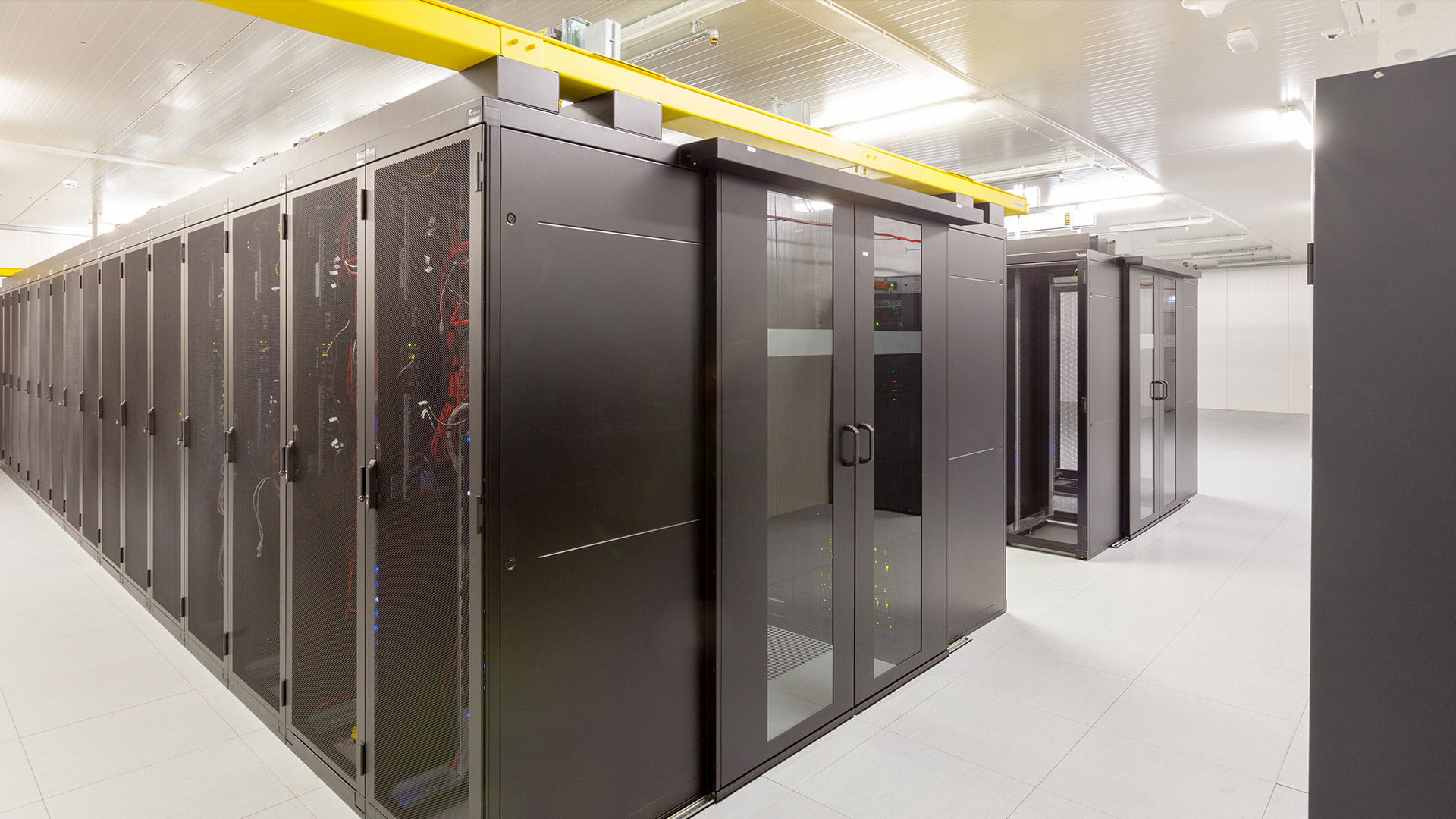Data centre tiers explained
Data centres are the backbone of the modern digital economy. They are the physical infrastructure supporting the applications and services we rely on every day, from email and social media to e-commerce and streaming video. It is important that these data centres never fail and can guarantee reliability. To ensure reliability, there are different tiers and ratings for data centres, each with its own set of standards and requirements. Understanding these classifications is essential for data centre design and operation. In this blog, we will explain the data centre tier classifications.
Contact us Contact us 
Data centre tiers
Let’s begin with the definition of data centre tiers. A common misunderstanding is that they are a measure of the size, capacity or maturity of a data centre. Rather, they are a measure of the level of reliability and availability that a data centre facility is designed to provide.Tier standards are issued by various agencies. The Uptime Institute's Tier Classification System (Tier I to IV) and the ANSI/TIA-942 (Rating 1 to 4) are the most widely recognised and accepted standards for data centre tiers. Both systems define four different levels of data centres, where level 1 is the least reliable with the lowest availability, while level 4 is the most reliable with the highest availability from an infrastructure design perspective. Each tier has its own set of requirements and properties.
While both the Uptime Institute’s tier rating systems and the ANSI/TIA-942 standards are designed to classify data centre reliability and availability, they differ in their approach. The Uptime Institute (UTI) primarily focuses on the design of mechanical and electrical critical infrastructure. The ANSI/TIA-942 standard covers a wider range of aspects related to data centres, including not only the design, mechanical, and electrical critical infrastructure but also the network, architectural, and operational considerations. This means that the standard incorporates other important areas such as security, architecture, and telecommunications.
The two standards share a common ground despite their differences. Initially, the Telecommunication Industry Association (TIA) released TIA-942, in partnership with the American National Standards Institute (ANSI), using the same tier levels. However, this led to confusion, prompting TIA to revise their tier levels to rating levels.
In this blog post, we'll discuss the specific requirements for your data centre by examining the various tier levels according to the Uptime Institute. So, what exactly are these tier levels? Read on to find out.
Uptime Institute Tier Standard Topology (TST)
To get a quick overview of the differences between the Tier Standard Topology, a summarising overview can be found below. For a more comprehensive understanding of each tier level, we'll provide a short clarification of each Tier level.| Tier I | Tier II | Tier III | Tier IV | |
|---|---|---|---|---|
| Active Capacity Components to Support the IT load |
N |
N+1 | N+1 |
N |
| Distribution Paths | 1 | 1 | 1 Active and 1 Alternative |
2 simultaneously Active |
| Concurrently Maintainable | No | No | Yes | Yes |
| Fault Tolerance | No | No | No | Yes |
| Compartmentalisation | No | No | No | Yes |
| Continuous Cooling | No | No | No | Yes |
Data Centre Tier I:
Basic data centre
Starting off with the most basic level of data centre classification, Tier 1 data centres provide a basic level of availability. These data centres include low levels of redundancy and a single distribution path. Therefore, when a single component of the data centre fails, such as a power supply or cooling unit, the entire data centre may be affected. To mitigate disruption, fuel is stored on-site for engine generators, but the data centre is still susceptible to disruption from both planned and unplanned activities.
Data Centre Tier II: Redundant capacity components data centre
Stepping up from a basic level data centre, the Tier II data centre is designed to provide a higher level of availability. The data centre is designed with redundant capacity components, meaning that if one component fails, a backup component is immediately available to take over.However, even with these redundant components, a Tier II data centre is still vulnerable to a single point of failure. With only 1 distribution path, the computer equipment will shut down immediately in case of distribution path maintenance or failure.
Data Centre Tier III: Concurrently maintainable data centre
Is it essential for your organisation to avoid downtime that causes disruption to your business operations? Tier III data centres are suitable for mission-critical applications, such as banking and real-time trading platforms as they provide a high level of availability. It is the most common type of data centre tier level. Having a Tier III data centre will ensure that your organisation can maintain its operations without disruption, even during a system maintenance operation.To ensure this high level of availability, redundancy is embedded in various features of the data centre. We design multiple independent distribution paths to servers and equipment, create emergency power systems with independent power sources and add redundant cooling systems. In addition, the automated failure detection, fire suppression systems and 24/7 on-site personnel support ensure that even in case of failure, prompt measures will be taken.
Data Centre Tier IV: Fault-tolerant data centre
These data centres are designed to provide the highest level of availability with multiple levels of redundancy and fault tolerance.Fault-tolerant data centres require that there’s no single point of failure. In addition, whenever a component fails, it can be isolated and the fault can be contained. Reversion modes are the last requirement for fault- tolerance.
As defined by the Uptime Institute, a Tier IV data centre has multiple, independent and physically isolated systems that provide redundant capacity components. In addition, they have multiple, independent and diverse distribution paths that simultaneously serve the computer equipment. All IT equipment is dual-powered. A Tier IV data centre is the only data centre that requires continuous cooling. This also reduces the possibility of outages and disruption.
Overall, Tier IV data centres are providing the highest availability of data centres but this comes with a cost. Looking at total IT availability, it is more logical to operate IT from different Tier III data centres than all redundant IT in one Tier IV data centre.
Certification
To achieve certification for your new data centre, whether it is TIA-942 or Uptime certification, your data centre needs to be designed and constructed according to the chosen standards.In addition, policies, procedures and operations need to be in place to reduce downtime risks as well. If your data centre has been designed and constructed to the standards, but operational policies and procedures like disaster recovery or maintenance and testing are not in place, you may not achieve your availability targets.
Accredited designers and specialists
When it comes to building or upgrading a data centre, considering your organisation’s specific requirements is essential to determine the appropriate tier. What type of applications and services will be hosted in the data centre?With our Tier and TIA-942 accredited designers and specialists, Royal HaskoningDHV can help you to translate your availability and reliability requirements into the design of your new data centre. We understand that a data centre is a critical component of your organisation's IT infrastructure and downtime can result in significant financial losses. That's why we are proud to offer accredited designers and specialists that have demonstrated their expertise in designing and delivering data centres that meet the highest industry standards for availability and reliability.
Equipped with the latest knowledge and tools, we can help you design a data centre that meets your specific needs and budget. Working with you to assess your requirements, conduct site analysis and recommend the right design and infrastructure to meet your objectives. We will also ensure that your data centre meets all relevant regulations and standards and provides a safe and secure environment for your IT equipment.
With Royal HaskoningDHV's Accredited Tier and TIA-942 Designers and Specialists, you can be confident that your data centre will meet your availability and reliability requirements. Contact us today to schedule a consultation and learn how our team can help you design a data centre that meets your needs.
